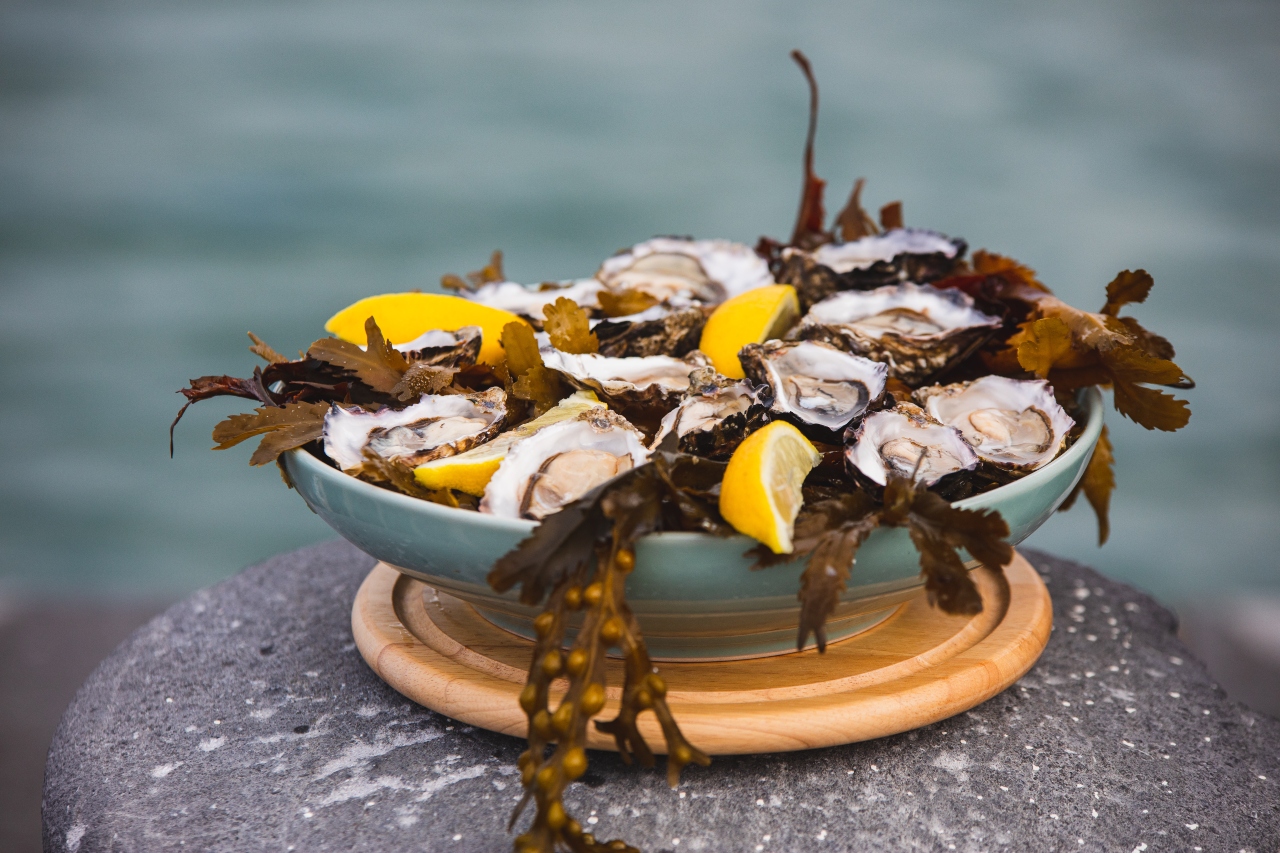
Ireland is best known for the warmth of its people, rolling green hills, dramatic seaside cliffs and rich, joyous culture. And while the island nation isn’t yet renowned for its distinct food offerings, that’s about to change. Ireland’s rich food culture goes beyond more familiar dishes like Irish stew and colcannon, the popular mashed potato-cabbage side dish. It’s also home to an abundance of fresh-caught seafood, the most tender lamb and an array of cheeses like Cashel Blue, Dubliner and Kerrygold, thanks to the grass-fed sheep, cows and goats that feast on Ireland’s lush green grass.
The Irish have always been strongly connected to the land and surrounding water, using the bounty to create some of the most unique dishes you’ll find anywhere. At the heart of this is Ireland’s sustainable food and drink scene, where restaurants, farms, and other producers are celebrating everything the island has to offer while preserving and reviving more traditional and responsible ways of producing food.
Planning a trip to Ireland? Tour some of the places that have helped put these items on the world stage. From smoked fish to seaweed, here are seven traditional Irish foods that are not only sustainably produced but have also transformed the way that we eat.

Tourism Ireland
Smoked Fish
When it comes to smoking fish, Woodcock Smokery in Skibbereen, County Cork is renowned for its traditional and environmentally friendly preservation methods. Working exclusively with wild fish, their millennia-old approach relies only on hardwood smoke and salt — no artificial flavours or colours are ever used. At the heart of this smokery is Sally Barnes, who has caught and smoked wild-caught fish for over four decades. Foodies from around the world visit Barnes to learn about the secrets of her craft and to join her on foraging expeditions, harvesting shore crabs, brown shrimp and a colourful array of wild seaweed. Visitors can also take smoking masterclasses or choose an evening aperitivo tasting where you can sample offerings like smoked tuna, salmon, and haddock.

Tourism Ireland
Oysters
Ireland’s more than 7,000 km of coastline makes it the perfect location for oyster cultivation, a tradition that goes back to the 13th century (although oysters have been a staple in Ireland for over 4,000 years). The fishing and cultivation of the native flat oyster has built and shaped coastal communities around the island for centuries. A unique mix of wild Atlantic waters, pristine freshwater rivers, and abundance of plankton and minerals from the unspoiled terrain gives every Irish oyster a distinct flavour and a high meat content. The taste of each mollusk varies depending on the bay in which they’re grown.
A trip to Ireland wouldn’t be complete without experiencing both the native flat oyster as well as the Irish rock oyster by touring an oyster farm. On the shores of Tragheanna Bay in County Donegal, you’ll find the Gallagher family’s Irish Premium Oysters, named the “Best Sustainable Seafood Processor” in 2020. You’ll learn about their oyster growth process and even get to sample some of their coveted shellfish. Venture to one of the island’s oldest oyster farms, DK Oysters in County Galway’s Ballinakill Bay, which dates back to 1893. Located along the Wild Atlantic Way, they offer private tours or exquisite gourmet dining experiences. For a fun, interactive outing, the Flaggy Shore Oyster Experience is the place to be. Also located along the Wild Atlantic Way at New Quay Pier in County Clare, midway between Galway and the Cliffs of Moher, visitors learn about how their oysters are farmed in a lighthearted yet informative way, plus they’ll also teach you how to shuck fresh shellfish.
For the most dedicated oyster devotees, the Galway International Oyster and Seafood Festival takes place each September in Galway City. The oldest oyster festival in the world and one of Europe’s longest-running food festivals, it’s a celebration filled with oyster shucking competitions, parades, music, and plenty of oysters for you to eat. If you happen to be visiting Ireland during the summer, plan a stop at the Connemara Oyster Festival in the seaside village of Ballyconneely where local producers, chefs, distillers and musicians gather for a lively celebration of local seafood.
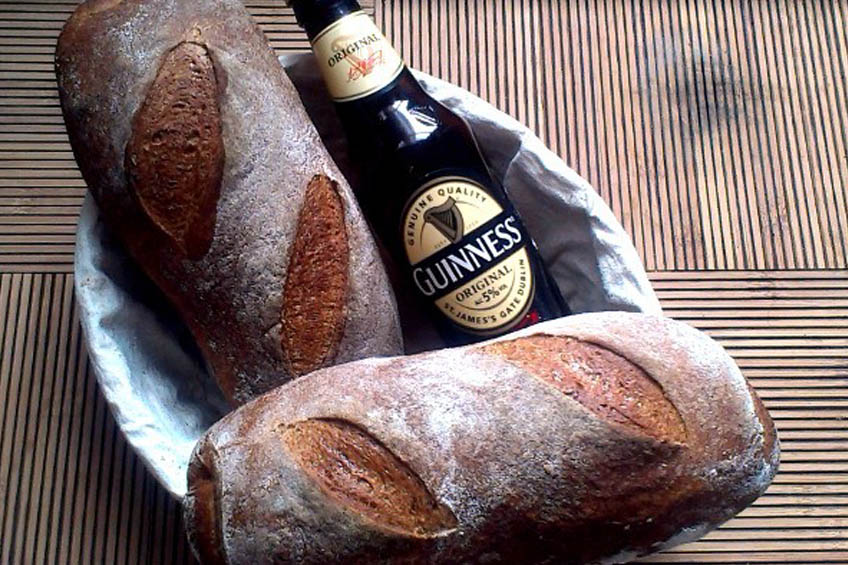
Tourism Ireland
Guinness Brown Bread
If you ask almost anyone what Ireland is known for, Guinness often tops the list. The brewery’s sustainability efforts include working with Irish barley farmers to help them transition toward regenerative agriculture, using nature-based solutions to support the production of low carbon barley and improving shared natural resources like biodiversity and water.
Guinness isn’t only a beverage, but it’s also the ingredient in several dishes available across Ireland, including bread. Justin O’Connor, Head Chef at the Guinness Storehouse in Dublin – acclaimed for its award-winning visitor experience – has created an irresistible quickbread recipe using the world-famous Irish dry stout. Similar to soda bread, it has a slightly sweeter taste. Head to the Brewer’s Dining Hall on the fifth floor of the Guinness Storehouse to enjoy this tasty bread alongside the ultimate Irish pub food, a hearty bowl of Guinness and beef stew.

Tourism Ireland
Rhubarb Bread and Butter Pudding
A sign of spring across the island, rhubarb is available as early as February in Ireland, and can be found everywhere from farms to cottage gardens. The perennial plant, originally from central Asia, was used for its medicinal properties in China for centuries before it was brought to Britain and Ireland in the 16th century. Used as a fruit although it’s technically a vegetable, rhubarb became popular as a filling for pies and crumbles in the 1800s and is now a spring dessert favourite affectionately known as the “pie plant.”
One of the places where you’ll find tart, ruby red stalks of rhubarb is in the village of Shanagarry in County Cork, home to the acclaimed Ballymaloe Cookery School. Situated on a 100-acre organic farm that produces fruit, vegetables, meat and dairy that’s used in their kitchens daily, the school attracts up and coming chefs from around the world. Among their offerings is a summer foraging course, where you’ll walk the countryside in search of traditional wild and foraged foods, including rhubarb.
Darina Allen — one of Ireland’s best-known cooks and authors, and founder of the Ballymaloe Cookery School — has created a new way to enjoy the spring bounty: a rhubarb bread and butter pudding. Made with fresh bread, cream, milk, free-range eggs and rhubarb, it’s a comforting dessert with a hint of richness. This pudding, and all of the other irresistible rhubarb desserts, make the shoulder season from March to May an excellent time to visit Ireland.
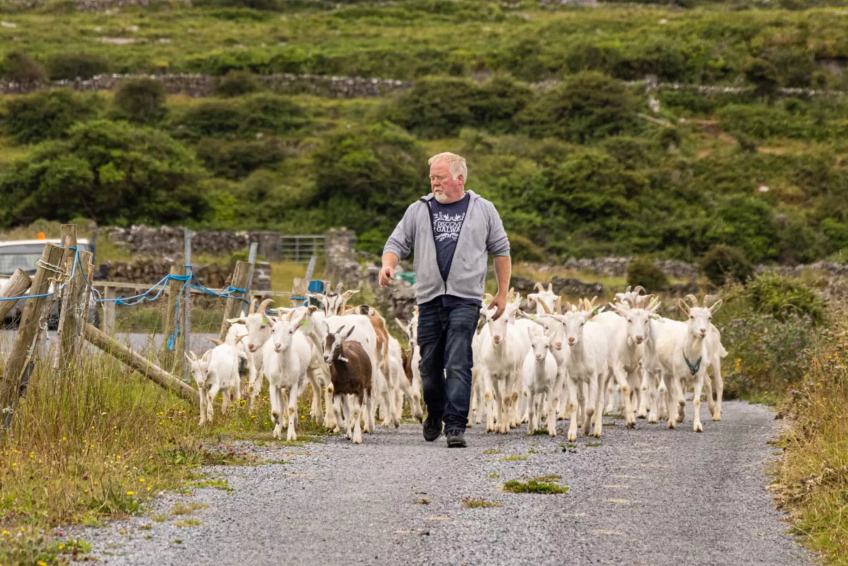
Tourism Ireland
Goat Cheese
Inis Mór, the largest of the Aran Islands and part of the Wild Atlantic Way on the west coast of Ireland, is home to some of the country’s finest sustainable farming. Reached by boat from Galway or the breathtaking Cliffs of Moher, it may be tiny in size (measuring only 12 km by 3 km), but its remote location, striking limestone landscape, and ancient ruins allows visitors to connect with Ireland’s rugged roots and traditional means of food production.
Inis Mór was recently in the spotlight when it played the fictional island of Inisherin in the Golden Globe winning and Academy Award-nominated film The Banshees of Inisherin, starring Colin Farrell and Brendan Gleeson. In addition to exploring some of the spectacular filming locations, plan an outing to Aran Goat Cheese and Food Tours, where deep-sea fisherman turned farmer Gabriel Flaherty, an Aran islander, makes his award-winning goat cheese. He teaches visitors about the food and heritage of Inis Mór, and how the island’s microclimate creates herb-rich grass for their Nubian and Saanen goats to graze on.
Another cheese lover’s experience beyond the Aran Islands is St Tola Goat Cheese in the heart of the Burren UNESCO Global Geopark in County Clare. Known for their soft cheeses, ash-rolled log and tangy-smoky hard cheeses, they’ve won numerous international awards over the years. Their goats are hand-reared on the Ni Ghairbhith family’s sustainable farm, producing products without harming the natural resources and land while also considering the social responsibility of their community’s needs as well as the working and living conditions of farmers and farm workers. You’ll have the chance to see the nanny goats and kids, and sample some of the cheese before you leave.
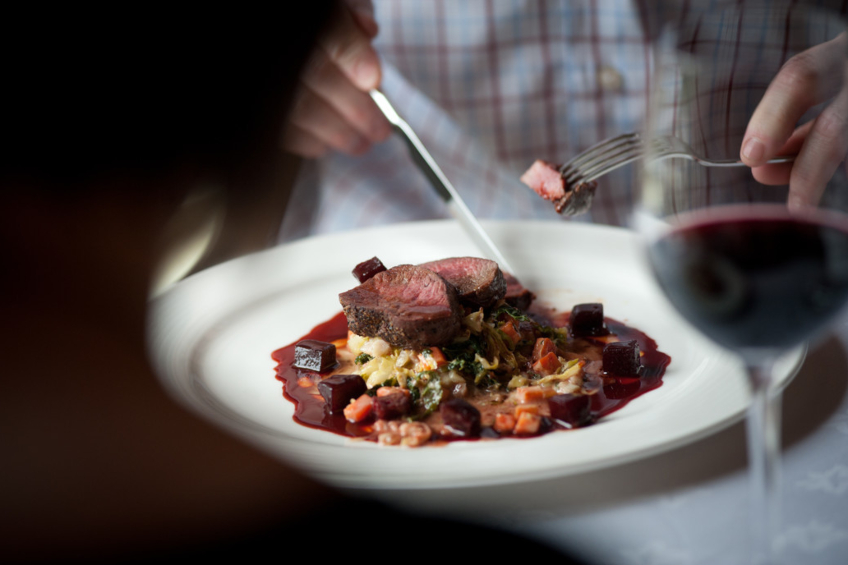
Tourism Ireland
Lamb Chops and Comber Potatoes
Did you know that there are nearly as many sheep in Ireland as there are people? According to the 2019 Census, there were 3.8 million sheep versus 4.9 million humans. This means that lamb is a farm-to-table cuisine staple, with producers all across the island incorporating sustainable farming techniques. One place to sample lamb is at Balloo House in County Down, a 400-year-old country pub and restaurant. Chef Danny Millar has created a dish, chargrilled spring lamb chops with herb crushed Comber potatoes, that not only uses sustainably raised lamb, but also incorporates Comber Earlies, the pride of County Down. These potatoes are known for their nutty, sweet taste, and they’re so unique, they have achieved EU Protected Geographical Indication status. If you’re not sure how to season lamb chops, Chef Millar uses a simple combination of garlic, thyme and oil.
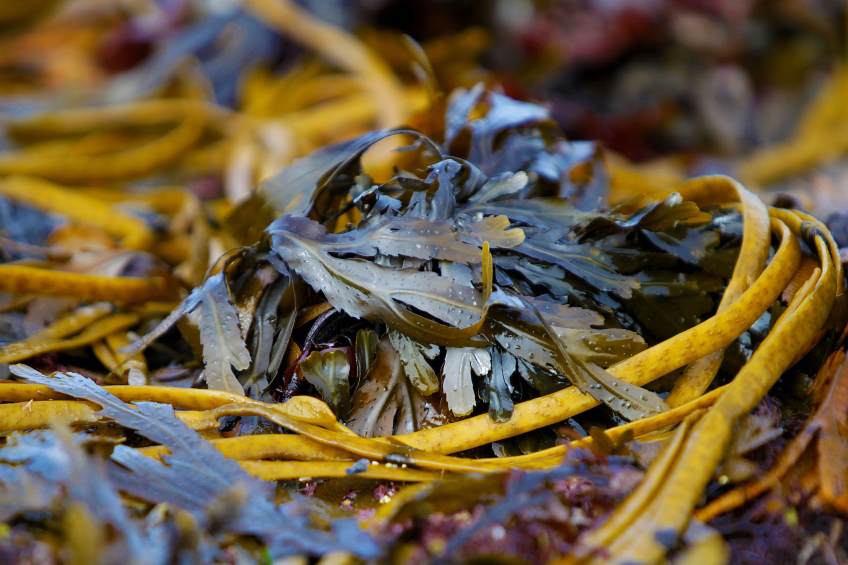
Tourism Ireland
Seaweed
When you’re surrounded by water, you look to the bounty of the sea for food options, including seaweed. Ireland has a long and storied history of incorporating seaweed into its cuisine, dating back to the time of the Vikings. Rich in vitamins and minerals and also a source of protein and fibre, seaweed was a vital source of nutrients and nourishment during times of hardship, like the Great Famine in the 1800s. It continues to be a valued ingredient on menus across Ireland, with over 500 indigenous species such as sugar kelp, dulse and sea spaghetti. It’s also highly valued for its health and wellness benefits, particularly at spas and bathhouses that offer seaweed baths. Whether you prefer to wrap yourself in seaweed or try some of the ways it can be added to your menu, it’s a fascinating industry to learn about during your vacation.
Marie Power, known as the Sea Gardener in County Waterford, holds events that take visitors along the shorelines while teaching them to identify different species of seaweed, how to sustainably harvest it, and the ways to cook with it. County Kerry’s Atlantic Irish Seaweed offers discovery workshops where you’ll walk along the Wild Atlantic Way while learning about seaweed specific to the area and sampling seaweed nibbles as you go. At Mungo Murphy’s Seaweed Co. on the Connemara coastline, guests learn how to pick seaweed during a guided walking tour, and then indulge in a meal made with freshly harvested sea plants and seafood. For the most unique seaweed experience in Ireland, stop by Rathlin Island’s Islander Kelp. Their signature green organic kelp isn’t dried but rather sorted and cut into noodle-like shapes that can be used in salads, soups, stir-fries and more. Their unique approach has captured the attention of top chefs across Ireland who are finding exciting and innovative ways to incorporate it into their menus.
Fill your heart — and your stomach — with the finest, sustainably produced, traditional foods that Ireland has to offer. Book your cultural and culinary adventure to Ireland today by visiting Ireland.com.
